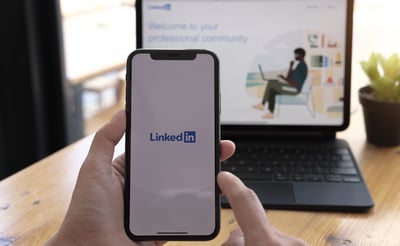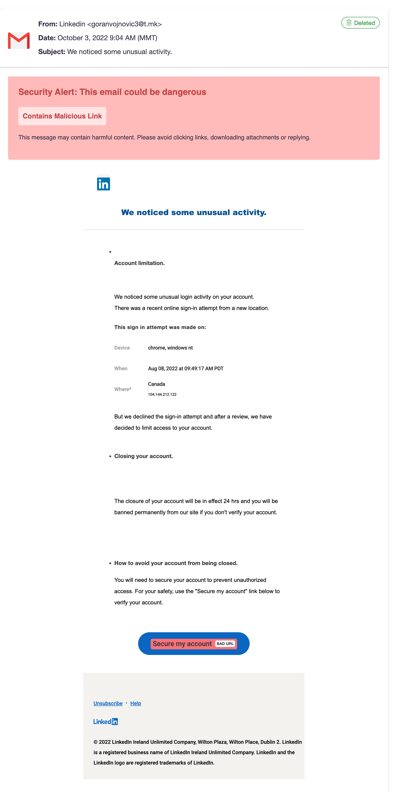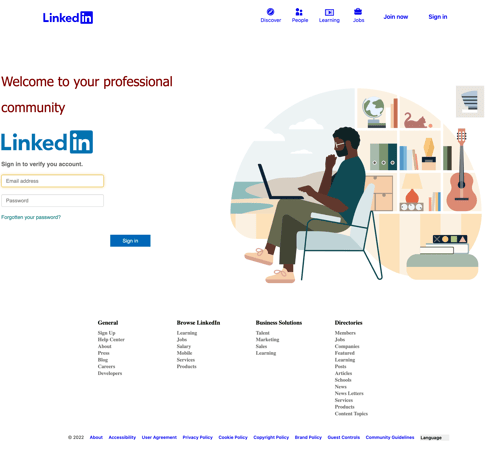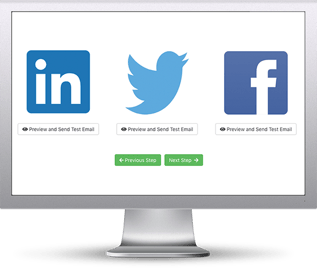 With compromised LinkedIn credentials providing cybercriminals with ample means to socially engineer business contacts, this campaign is a stark warning for organizations.
With compromised LinkedIn credentials providing cybercriminals with ample means to socially engineer business contacts, this campaign is a stark warning for organizations.
The power of impersonation is demonstrated in this latest attack detailed by the security analysts at ArmorBlox. Using a mixture of social engineering cues, valid SPF and DMARC checks, and a spoofed logon page, the threat actors behind this campaign targeted a national travel company to steal LinkedIn credentials.
According to ArmorBlox, the campaign starts with an email purporting to come from LinkedIn (although the actual email shows it’s not) informing the recipient of a bad logon attempt.

The call to action of securing their account is enough to create a sense of urgency in the victim to want to take control of the situation and respond accordingly – in this case, by clicking the link.
Upon clicking, the victim is presented an impersonated LinkedIn logon page, shown below:

It’s evident some thought was put into the presentation of this page to make it appear legitimate. The victim user is prompted to provide their credentials to verify their identity and “secure” the account.
The ramifications of this attack being successful are likely a ripple effect of subsequent social engineering attacks until just the right victim organization is found.
With such blatant signs of this being bogus right from the beginning, no user should fall for this scam. However, in the rush of the business day, it’s conceivable that users will fall for this – that is, if they aren’t continually operating in a state of vigilance when interacting with email. This vigilant state is achievable by putting employees through continual Security Awareness Training.
 Here's how the Social Media Phishing Test works:
Here's how the Social Media Phishing Test works:




